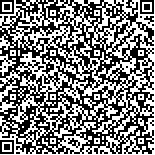| 引用本文: | 汪金涛,陈新军,高 峰,雷 林.基于环境因子的东南太平洋茎柔鱼资源补充量预报模型研究.海洋与湖沼,2014,45(6):1185-1191. |
| |
|
| |
|
|
| 本文已被:浏览 2178次 下载 2389次 |

码上扫一扫! |
|
|
| 基于环境因子的东南太平洋茎柔鱼资源补充量预报模型研究 |
|
汪金涛,陈新军
|
|
上海海洋大学海洋科学学院;上海海洋大学海洋科学学院,上海海洋大学海洋科学学院;上海海洋大学海洋科学学院
|
|
| 摘要: |
| 东南太平洋茎柔鱼(Dosidicus gigas)是短生命周期种类, , 其资源量极易受到海洋环境变化的影响。根据2003 - 2012年我国鱿钓船在东南太平洋的生产统计数据, , 以及茎柔鱼栖息地的海表温度(SST)、海面高度(SSH)、叶绿素a 浓度(chl a)数据, , 利用相关性分析法分析茎柔鱼资源丰度和补充量(以单位捕捞努力量渔获量为指标, , t/d)与栖息海域20°S - 20°N、110°W - 70°W的SST、SSH、chl a浓度的相关性, , 获取相关系数大的关键海区位置, , 同时加入茎柔鱼产卵场、索饵场最适表层水温范围占总面积的比例(分别用PS、PF表示)两个参数, , 建立三种基于主要环境因子的误差反向传播(EBP)神经网络资源补充量预报模型, , 进行了比较。结果表明: : 茎柔鱼资源丰度与SST、SSH、chl a浓度的相关系数最大值海域为7月份的Point1(13°N, , 102°W)海区、9月份的Point3(11°N, , 102°W)海区和3月份的Point5(8°S, , 107°W)海区; 资源补充量与SST、SSH、chl a浓度的相关系数最大值海域为6月份的Point2(8°N, , 103.5°W)海区、2月份的Point4(12°N, , 97.5°W)海区和10月份的Point6(10°S, , 93.5°W)海区。EBP神经网络预报模型结果认为: : 基于产卵环境关键影响因子的方案2(以Point2的SST、Point4的SSH、Point6的chl a浓度、PS作为模型输入因子)和基于全部环境关键影响因子的方案3(以Point1与Point2的SST、Point3与Point4的SSH、Point5与Point6的chl a浓度、PS、PF作为模型输入因子)的两种神经网络预报模型均方误差较小, , 其准确率可达90%左右。 |
| 关键词: 东南太平洋 茎柔鱼 资源补充量预报 神经网络 |
| DOI:10.11693/hyhz20140300088 |
| 分类号: |
| 基金项目:国家高技术研究发展计划(863 项目), 2012AA092303 号; 国家发改委产业化专项项目, 2159999 号; 上海市科技创新行动计划项目, 12231203900 号; 国家科技支撑计划项目, 2013BAD13B01 号 |
附件 |
|
| FISH RECRUITMENT FORECASTING FOR DOSIDICUS GIGAS BASED ON MULTI-ENVIRONMENTAL FACTORS IN THE SOUTHEASTERN PACIFIC |
|
WANG Jintao and Chen Xinjun
|
|
College of Marine Sciences of Shanghai Ocean University Shanghai,College of Marine Sciences of Shanghai Ocean University Shanghai
|
| Abstract: |
| Dosidicus gigas is a short-lived squid and is sensitive to environmental changes with great abundance fluctuations. Based on the fishing production data from Chinese squid jigging fleets during 2003 to 2012 in the southeastern Pacific, , combined with sea surface temperature (SST), , sea surface height (SSH), , chlorophyll-a (chl-a) concentration in the habitat ground, , relationships between the SST, , SSH, , chl-a concentration and the area occupied by favorable SST in spawning ground (defined as those with temperatures in the range 24 - 28°C, , expressed as PS), , the area occupied by favorable SST in feeding ground (defined as those with temperatures in the range of 17 - 22°C, , expressed as PF) were calculated and analyzed by different methods, , and then recruitment forecasting models were established based on the above environmental factors. The result shows that the correlations between CPUE (catch per unit effort) and environmental factors are significant at six key points, , i.e., , Point1(13°N, , 102°W) in July, , Point 3(11°N, , 102°W) in September, , Point 5(8°S, , 107°W) in March, , Point 2(8°N, , 103.5°W) in June, , Point 4(12°N, , 97.5°W) in February, , and Point 6(10°S, , 93.5°W) in October. The models were developed by using Error Backpropagation Network (EBP), , in which the key points, , PS, , and PF are involved. It is found that the model with SST at Point 2, , SSH at Point 4, , concentration of chl-a concentration at Point 6, , and PS; and the model with SST at Point 1 and Point 2, , SSH at Point 3 and Point 4, , chl-a concentration at Point 5 and Point 6, , PS, , and PF are equally good, , with which the forecasting accuracy rate could reach at least 90%. |
| Key words: southeastern Pacific Dosidicus gigas forecasting model of resources recruitment neural network |
|
|
|
|
|
